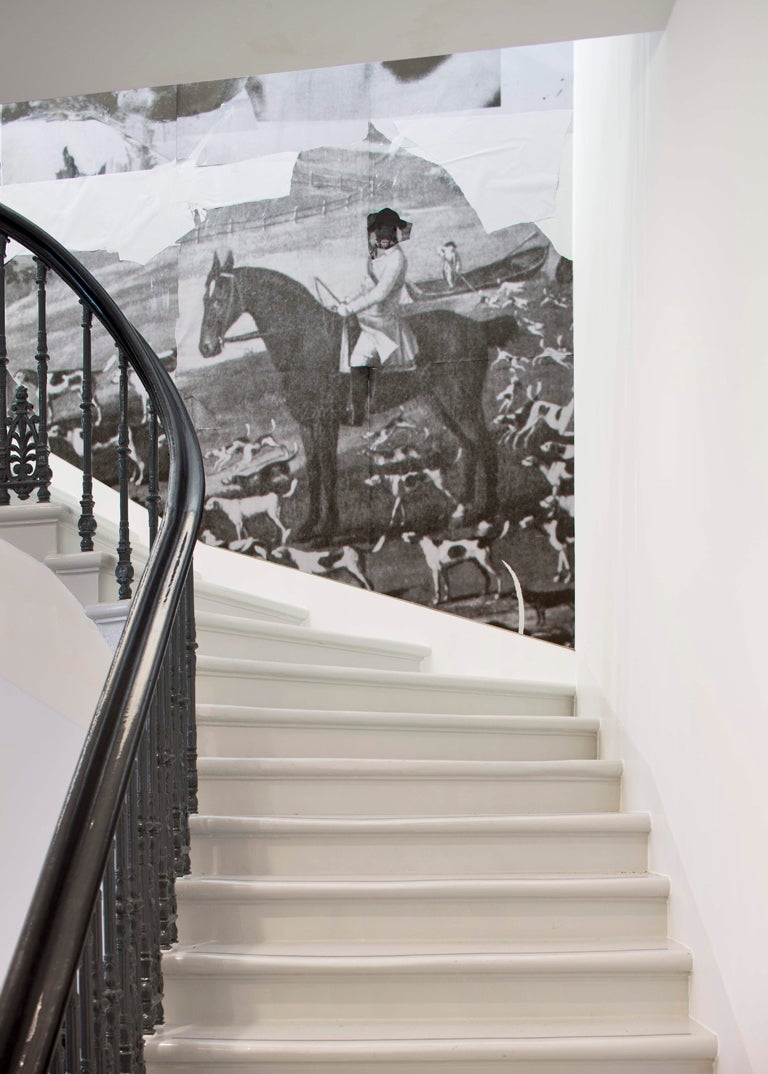
A five-metre long collage featuring a fox-hunt has some disconcerting aspects: a German bomber hovers at the top of the scene, and beneath, alongside the men in breeches riding and the rolling English countryside is a sinister-looking Siamese-twin dog running among the pack of Stubbsian hounds.
The collage, created in situ across the central wall at Haunch of Venison gallery in London, is the work of Adrian Ghenie, a 34-year-old Romanian artist with an interest in the legacy of Nazism, the English upper classes, and the misuse of science.
Ben Tufnell, director of exhibitions at Haunch of Venison, says his 12 new works bring together historical figures such as the evolutionary scientist, Charles Darwin, and Josef Mengele, the German physician at Auschwitz, to connect ideas of aristocratic "breeding" with Nazi eugenics.
"He was a child when Ceausescu was in power and a teenager when the transition happened," explains Tufnell. "He grew up under that aura of political darkness, and he could see its lingering traces around central Europe."
Having lived in Berlin before moving to London, he became interested in the Kaiser Wilhelm Institute, which was set up in the early 20th century. Despite its high principled aims, it became one of the places where the eugenics experiments were conducted. Ghenie says: "I am interested in the presence of evil, or more precisely, how the possibility for evil is found in every endeavour, even in those scientific projects which set out to benefit mankind."
This group of paintings explore the theme of scientific research that is turned on its head, adds Tufnell. "Charles Darwin's ideas, for example, were co-opted by the Nazis, such as the concepts of natural selection and the survival of the fittest."
Ceausescu is the subject of the portrait Study for "Boogeyman", which shows the dictator in a state of physical disintegration. Ghenie created this work when it emerged that Ceausescu's body, along with that of his wife's remains, had been disinterred from their graves last year, after speculation that they had never been killed.
Ghenie has created tableaux of evil that range across 20th-century dictatorships in the past: portraits of Hitler's key henchmen, the Nazi leader's Bavarian residence (the Berghof), Stalin's tomb and Lenin's dead body.
Adrian Ghenie, Haunch of Venison, London W1 ( www.haunchofvenison.com) to 8 October
Join our commenting forum
Join thought-provoking conversations, follow other Independent readers and see their replies
Comments